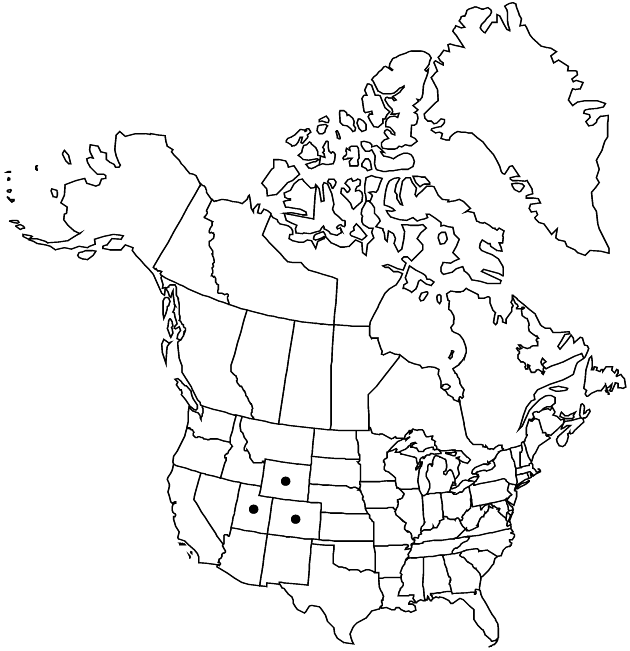Cirsium barnebyi
Brittonia 33: 296, fig. 3. 1981.
Perennials, 30–50 cm; caudices and woody taproots. Stems 1–few, erect, gray-tomentose or glabrate; branches few, above middle, ascending. Leaves: blades oblongelliptic, 10–35 × 2–7 cm, strongly undulate, margins shallowly to deeply lobed, lobes 8–15 pairs, linear-lanceolate to broadly triangular, closely spaced, spreading, coarsely spinose-dentate or cleft into 2–5 spine-tipped divisions, main spines 3–5 mm, faces densely gray-white-tomentose; basal usually present at flowering, winged-petiolate; principal cauline becoming sessile and progressively reduced distally, bases decurrent as spiny wings to 5 cm; distal cauline usually much reduced, less lobed. Heads 1–20+, borne singly or clustered at branch tips, in leafy, ± corymbiform arrays. Peduncles 0–4 cm. Involucres ovoid to hemispheric or campanulate, 1.7–2 × 1.5–2 cm, loosely arachnoid on phyllary margins or glabrate. Phyllaries in 6–9 series, imbricate, ovate (outer) to linear-lanceolate (inner), entire, abaxial faces with narrow glutinous ridge; outer and middle appressed, spines ascending to spreading, stramineous, 2–7 mm; apices of inner often flexuous, narrow, flat, entire, spineless, glabrous. Corollas lavender to pink-purple, 18–28 mm, tubes 7–9 mm, throats 4–8 mm, lobes 5–11 mm; style tips 3.5–5 mm. Cypselae tan to brown, 5–5.5 mm, apical collars colored like body, narrow; pappi 15–23 mm.
Phenology: Flowering summer (Jun–Sep).
Habitat: Dry juniper woodlands, sagebrush scrub, on shale, limestone, sandstone
Elevation: 1600–2600 m
Distribution

Colo., Utah, Wyo.
Discussion
Of conservation concern.
Cirsium barnebyi occurs from the southern Rocky Mountains of southwestern Wyoming, northeastern Utah, and northwestern Colorado.
Selected References
None.
Lower Taxa
"fine" is not a number.